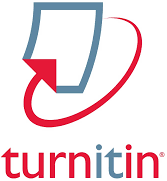Analysis of the Abundance and Diversity of Microplastic Contamination in Ekas Bay Cultivation Areas
DOI:
https://doi.org/10.29303/jfh.v4i2.4950Kata Kunci:
Cultivation, Ekas Bay, Floating Net Cage, Microplastics, PollutionAbstrak
Ekas Bay is a semi-enclosed bay and estuary in the southern part of Lombok Island. Ekas Bay has an area of 5,312.68 hectares, although it is not very wide, this bay has its own uniqueness and is relatively protected from waves because it is located inland. In Ekas Bay itself, two river estuaries are found, namely the Awang River Estuary and the Kelongkong River Estuary. The existence of these two river estuaries has a negative impact on the condition of the waters of Ekas Bay because residue from household activities is carried away by the river current, one of which is plastic waste. The presence of microplastics on ocean coasts has a negative impact on sea water quality and the life of marine biota, microplastics cannot evaporate or degrade by themselves, microplastics will accumulate in sea water and the body parts of marine biota. This research aims to identify the type and abundance of microplastics in the Ekas Bay floating net cage area and the results obtained in water samples were that the abundance of microplastics at point A was 49.44 par/L, point B was 55.76 par/L and point C was 40.40 par /L. The abundance of microplastics in sediment samples at point A was 12.25 par/L, point B was 10.8 par/L and point C was 11.01 par/L.
Unduhan
Diterbitkan
Terbitan
Bagian
Lisensi
1. The copyright of this journal belongs to the Editorial Board, based on the author's consent, while the moral rights of the publication belong to the author(s).
2. The formal legal aspect of journal accessibility refers to the same Creative Common Attribution + Noncommercial + ShareAlike (CC BY-NC-SA), implying that publication can be used for non-commercial purposes in its original form.
3. Every publication (printed/electronic) is open access for educational, research and library purposes. In addition to the objectives stated above, the editorial board is not responsible for copyright infringement















